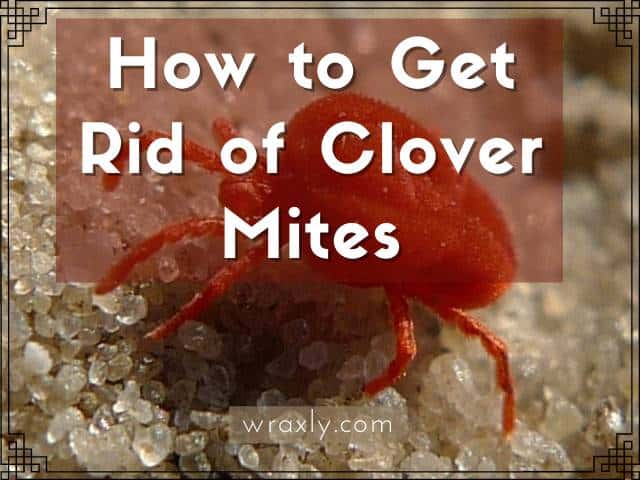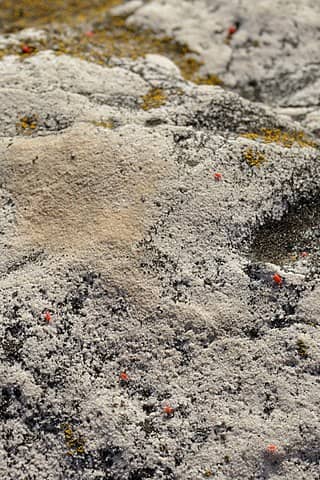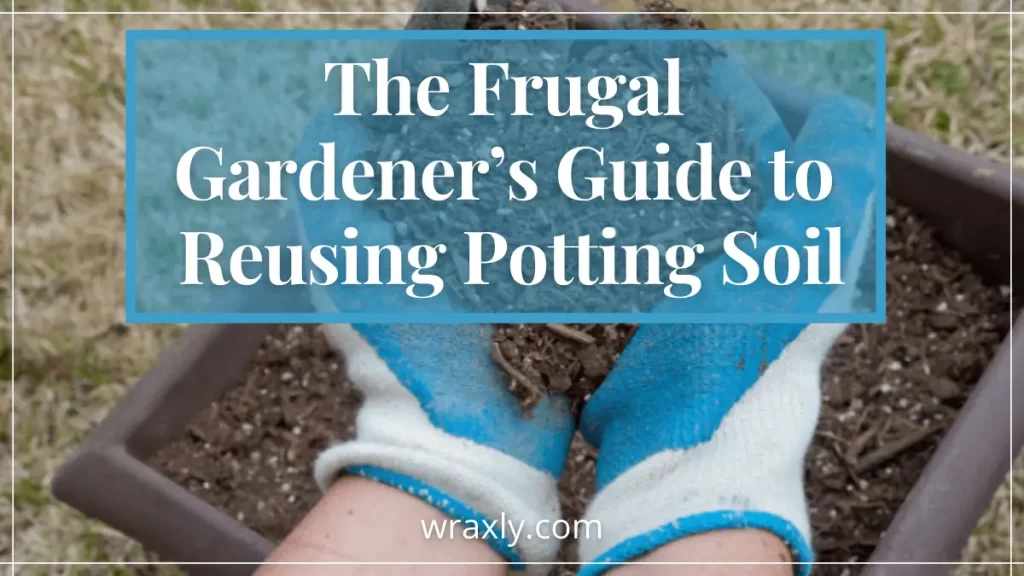Although they look similar to spiders, clover mites are a different category of arachnids. With their characteristic reddish-brown ovular body, these tiny insects are a common sight in most gardens.
They attach themselves to a plant’s surface and feed on it, to the detriment of the plant. If you haven’t spotted one of these mites because of their minuscule nature, you’ll definitely have noticed the red stains on the paths and floors. Continue reading to find out how to get rid of clover mites.

Do Clover Mites Bite?
Luckily, clover mites do not bite humans so you don’t have to worry about these pests sucking your blood.
They are not like termites and do not damage clothing or furniture. And even if they get in your kitchen through your vegetable patch, they won’t ruin your food. But that doesn’t mean their presence is a good thing.
So what are the dangers of having clover mites?
- When crushed underfoot, these mites leave red stains. Since they are small enough to go unseen, this is a huge problem because you will step on them, as will your family members and pets. That means stains on your floors, carpets, rugs, sofas, countertops, and all other surfaces.
- Clover mites get their nutrition from the plants and flowers in your garden. That includes grass, vines, and any other vegetation. The nature of this feeding is parasitic and will leave your garden reeling for months.
- Even when the mites are inside your home instead of in your garden, they can still cause damage. While there are no plants for them to feed on, the clover mites can survive on the algae and mold that grows in rooftops and patios.
In short, once you develop a clover mite infestation, they become impossible to get rid of. And the longer you allow them to stay the greater the damage they will cause.
Are Clover Mites Chiggers?
While looking up clover mites you may also come across another type of insect – chiggers.
Both these insects cause damage in similar ways, but the main difference is the areas they inhabit.
So, you will find chiggers in large open areas with a thick brush. In contrast, clover mites take root in developed properties. If you notice them on the pavement outside your home there’s a good chance they will eventually make their way into your home.
Another major difference is the size. Clover mites grow up to 1 mm big, which is in stark contrast to the 0.4 mm length for chiggers. Even though clover mites are pretty small, a person with a discerning eye will be able to spot them. You just need to know what you’re looking for.
Do You Have Clover Mites?
Now that we have established that clover mites are extremely difficult to spot because of their minuscule size, the question becomes, how can you tell if you have mites?
There are a few signs that you should look out for once you suspect a garden infestation. If your home does have a mite problem, it will start in the garden or in the place with the most plants.
Some of the signs to note include –
- Uneven patches of grass
- Red patches on concrete
- Wilting plants with deteriorating health
- Reddish-brown insects on your fences or exterior walls

Are Clover Mites Seasonal?
Like all insects, clover mites have patterns. Once you identify these seasonal trends, you can predict when they will become a concern and how quickly you should take preventative action.
Clover mites flourish in the cooler seasons, so you’ll see their numbers rise in spring and fall just as the temperatures drop.
Coincidentally, this is the time when your plants should be thriving the most. So if your otherwise luscious succulents start wilting, you’ll know something is wrong. While thick shrubs are a favorite among mites, you shouldn’t ignore more obvious targets, like over-fertilized grass.
How Do Clover Mites Enter Your House?
While your clover mite infestation may start outside, it will not remain there for long.
Once these pests ravage through your garden, they will start entering your house through gaps in your windows and doors. They can also climb up the outer walls of your home and find a way in through the roof.
Although you can try blocking their routes, the mites are so tiny they will find a way in regardless. Your only option is to get rid of the mite infestation entirely.
FURTHER READING
- How to Get Rid of Possums in Your Yard
- 9 Tips for Controlling Cucumber Beetles
- How to Get Rid of Fruit Flies in House Plants
- How to Get Rid of Gnats in a Vegetable Garden
- Do Spider Mites Live in Soil?
How to Get Rid of Clover Mites?
If you have a clover mite problem, you will need to act quickly to eradicate it. There are several ways you can do this.
1) Manual Removal
The best thing about clover mites is their bright red coloring. This makes them easy to spot despite their size, especially if your home’s furnishings are light and airy.
One of the best ways to cater to an internal infestation is to manually remove the bugs using a vacuum cleaner.
The suction will make sure the bugs are plucked off any surface instead of being crushed. That will prevent stains on your floors, walls, and furnishings. While this is a quick remedy that can make your house presentable, it is not a permanent fix.
2) Sponging Surfaces
Another quick method for getting rid of clover mites is by sponging the surfaces of your home with a soap solution.
Dishwashing fluid is a great way to not only get rid of the pests but also prevent their return. The smell of the soap will fend off future attacks for a small period. Add the liquid to your sponge and use it to wipe your counters, tables, chairs, floors, and walls.
If you want to make the fragrance even more repellent for the mites, you can try adding essential oils to your mix. However, this method has one problem. Pressing on the mites while wiping, you squish them and leave dark stains on your furniture.
That is any homeowner’s nightmare, especially since these red stains are impossible to remove later.
3) Acid Cleanse
A more permanent way to get rid of clover mites is using boric acid. Simply sprinkle the powder inside and outside your home. There are two benefits to this approach.
First, boric acid will kill any mites in the area. Second, spread enough powder around the perimeter of your home, and it will ward off any future attacks.
Of course, the con is that the powder is easily washed or swept away. That means you’ll need to continue redoing it every other day. Make sure you sprinkle the acid in the corners of each room, under furniture, across doors and window sills, and all over your yard.
Pay particular attention to your fence and outdoor furniture.
4) Vinegar Solution
Vinegar works similarly to acid, except it is easier to dole out.
Dilute some white vinegar and put it in a spray bottle for easy use. You can use it to clean surfaces indoors or spray it on your lawn. Keep in mind that vinegar is acidic, so you won’t want to overdo it on your plants.
You can try the same method with detergent.
5) Diatomaceous Earth
Few people know that Diatomaceous Earth acts as a mite repellent. You can purchase it from any store and sprinkle it around your home.
The DE barrier is one of the most efficient methods of preventing the entry of clover mites. While clearing the mites out of your yard may take longer, this is an instantaneous way of getting rid of your indoor clover mites.
Recommended Diatomaceous Earth Products
6) Baby Powder
If you don’t want to go out of your way to purchase mite repellant products, there are plenty of household items that work equally well.
Baby powder is an excellent deterrent. If you’re worried about clover mites walking all over your kitchen counters or climbing up your bed frame, simply create a baby powder perimeter to ward them off.
Like all powder-based solutions, your main concern with this method will be regularly maintaining the line.
7) Removing Vegetation
Most people spend all their energy focusing on their internal infestation and ignoring the root problem.
The fact is that while having clover mites inside your home may be a nuisance, you can’t really get rid of them until you clear their outdoor nests.
The best preventative measure you can take is to get rid of the thick vegetation around your home. Experts suggest clearing all vegetation within a 1 to 2 feet perimeter of your home.
8) Blocking Entry Points
Once you clear the green spaces nearest to your house, the clover mites will be less tempted to enter.
However, you should still take steps to block their entry points because once they start laying their eggs inside your home, removing them will become impossible. Check crevices in your window frames, door hinges, siding, and roof. Block off as many entrances as possible.
At the end of the day, if you have an infestation, using one of these tricks won’t be enough. You will have to take multiple preventative and regulatory measures to solve the problem entirely.
How to Kill Clover Mites’ Nests?
Getting rid of the individual mites inside and outside your home may relieve the symptoms, but it will not cure the illness.
To do that, you will need to identify and destroy the clover mite nests. Female mites will lay up to 70 eggs at one time, and these will remain dormant for months until they eventually hatch in the fall. If you can find the nest in time, you can effectively resolve the crisis.
Ideal places to look for clover mite nests include the crevices in tree bark, fence posts, and gaps in walls. Target any areas that receive direct sunlight and offer protection in the winter months.
How to Prevent Clover Mite Nests?
If you’ve gotten rid of the problem once, your best bet is to take preventative measures so the cycle doesn’t repeat itself. Some of the steps you should take include:
- Clearing grass and heavy vegetation near the boundary of your home
- Avoiding overly fertilizing your plants because that will attract mites
- Sealing entry points that allow mites access into your home
- Not over-watering your garden since soft soil provides ideal conditions for clover mites’ nests
Read more about organic pest control

Darrell has a passion for gardening that he inherited from his father. Go here to read more about the influence his father played in his love for gardening. If you want to send Darrell a quick message, then visit his contact page here.



![10 Common Container Garden Mistakes to Avoid [Beginner’s Guide]](https://wraxly.com/wp-content/uploads/2021/02/10-Common-Container-Garden-Mistakes-to-Avoid-Beginners-Guide-1200-1024x576.webp)